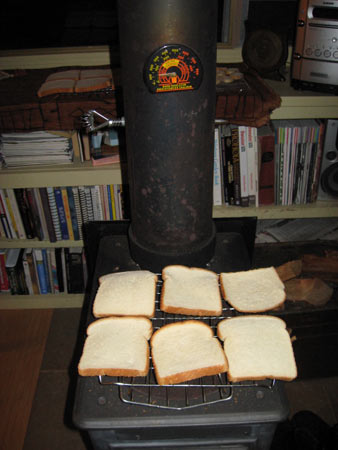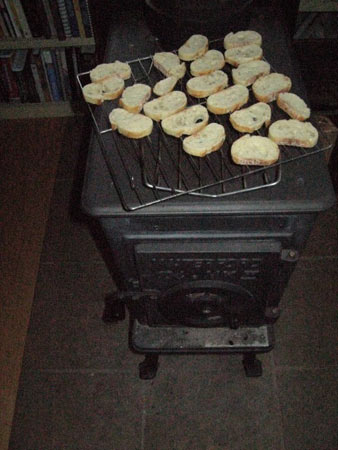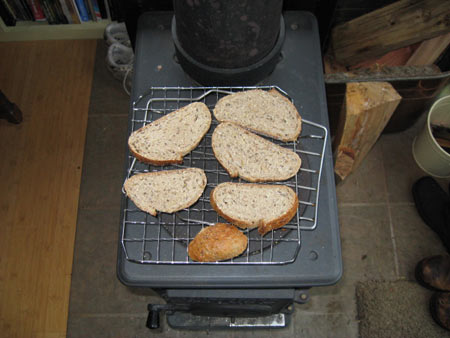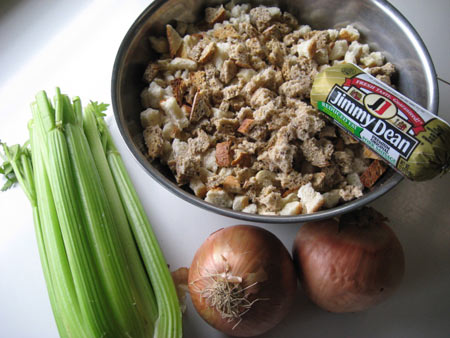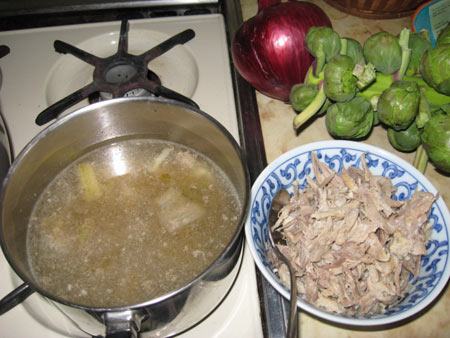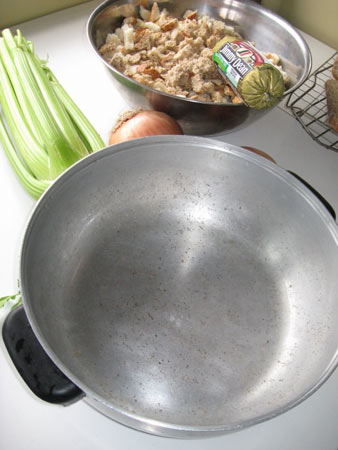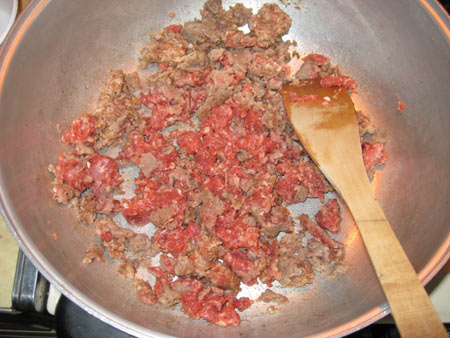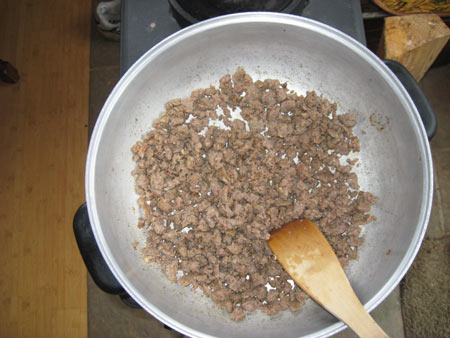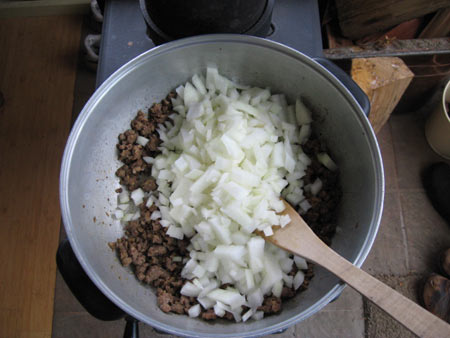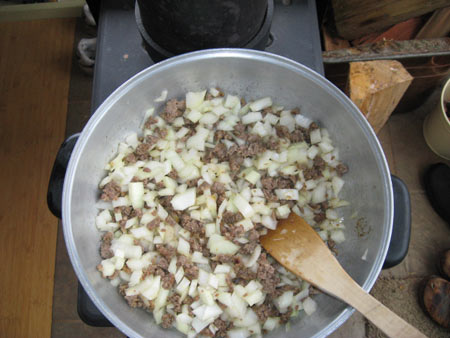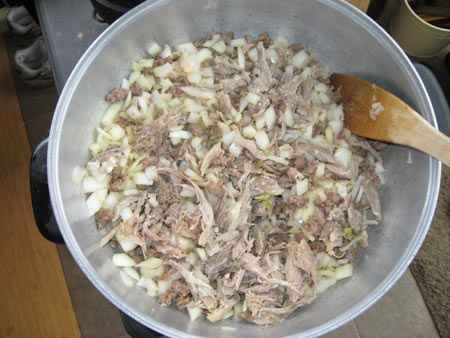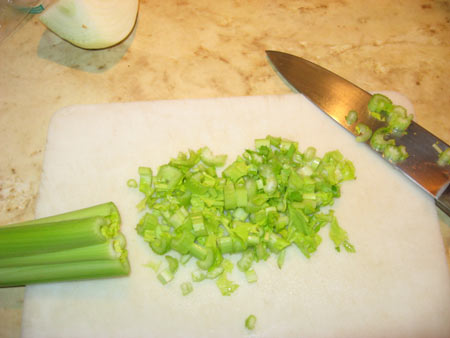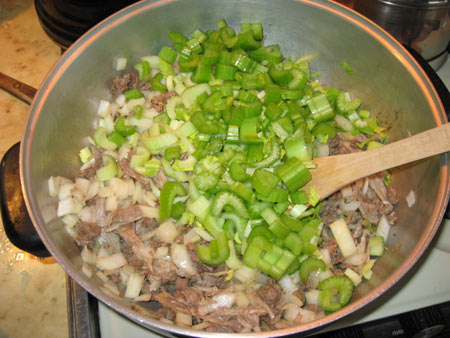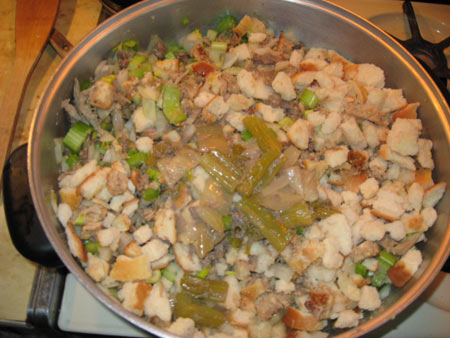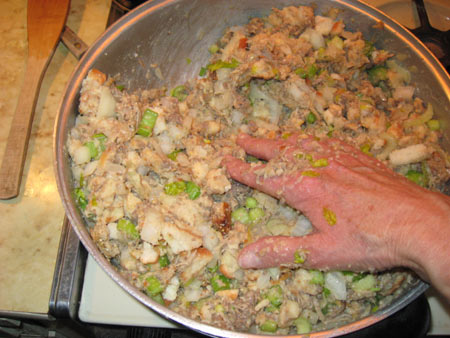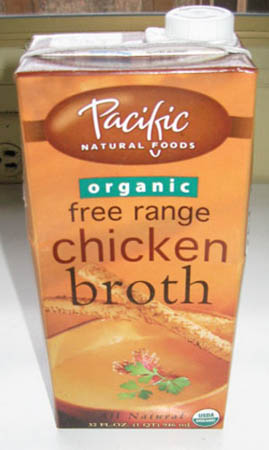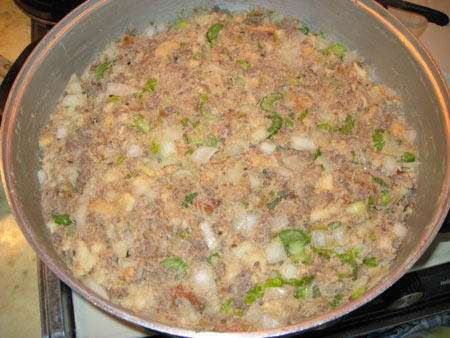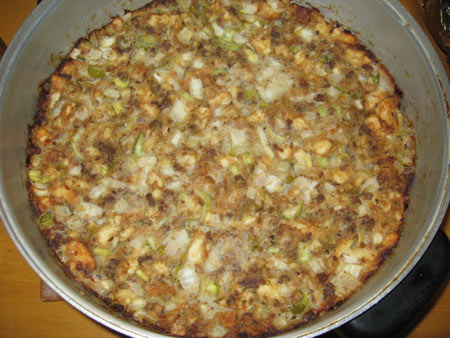I never did finish my stories about white bread . . .
Already you know that I buy it only to make dressing at Thanksgiving. Sometimes I make dressing at other times of the year if my nephew (who is in the Navy and not always here for holidays) is in town, just because he likes it a LOT. I ask for turkey backs and necks at my local grocery (they don’t often have them) and freeze them so that I have them on hand for a dressing emergency. Only occasionally can I find giblets, and I freeze them as well to add to the mix.
But I have other experiences with white bread.
White Bread Story #1
The first one involves my Grandma. She went through a stage about 10 years before she died that can only be described as “vivid.” This was in the late 60s and early 70s and hot pink, lime green and tangerine orange were . . . well . . . available. Grandma started crocheting afghans that were loud enough to keep you awake at night. It turned out it was her cataracts. As things grew dim through her eyes she sought out the colors she could see. She had created artistic things all her life. . . the queen of craftdom . . . and she liked color. But now she could see only the neon varieties which I’m guessing looked like tasteful pastels to her.
During this period she discovered a new craft . . . White Bread Clay. She mixed half and half water and Elmer’s Glue and kneaded it with white bread (crusts removed) and some food coloring . . . that would be my mother’s professional cake-decorator colors that knocked your socks off if you weren’t careful.
Grandma patiently kneaded the mixture into a fine sculpting medium. It was the precurser of Sculpey it was so smooth . . . and she sculpted flowers. Small, delicate, one-petal-at-a-time, perfectly formed roses and tulips and zinnias . . . that looked like they came from Mars because surely the flowers are brighter there.
Once she had her cataract operation her creations settled back into colors that were more “acceptable.” I missed her color flamboyance, but her gifts started to match my decor better.
White Bread Story #2
When my son was about 4 years old, new people bought the property next door and they had 2 children only slightly older than he. This was a huge boon . . . to have kids “next door” to play with at any time.
One day he came running home, excited to no end . . . “Momma!!!! They have the best sandwiches there!!! You can squoosh’em down to real skinny. Just push on’em and they get flat.” Beloved Son had met white bread in its native form for the first time.
[Side note: Beloved Son also met Kool-aid at this house. This family had plenty of money to buy real food and mom was home all the time. They only lived next to us 4 or 5 years and both children broke bones while they were there from small falls. Beloved son fell out of trees and tumbled 360º off his moving ATV (All-Terrain-Vehicle, his father’s idea when he was 10) and had bruises only. Good nutrition makes a difference,]
White Bread Story #3
From 1990 until 1998, every winter but one, we went to Baja California and other southern places for 2 to 4 months in the winter. We had a 20-foot 1970-something Minnie Winnie motor home. It had high clearance and took us to remote outposts. This was when Cabo San Lucas was a sleepy fishing village . . . no luxury hotels, free camping on the beach. Large (6″5″) husband, large dog (German/Australian Shepherd mix), me and Beloved Son. We had some adventures, I tell you, with hurricanes and washed out roads . . . but that’s a story for another day.
Remember I said that Ma’s Thanksgiving dressing takes about 1 and a half loaves of bread. I usually cheat and use one loaf of white bread and make up the rest with the good stuff . . . the real staff of life . . . but one of those years, along about 1993 or 4 I bought 2 loaves of white bread for Thanksgiving dressing. I used the requisite one-and-a-half-loaves and that left one-half loaf that I put on top of the refrigerator and forgot.
We took off shortly after Thanksgiving that year and returned 4 months later. The bread was still on top of the refrigerator. Now . . . granted . . . it was winter and cold in the house while we were gone. But it didn’t freeze. And the sun came in to warm things up on some days . . .
I saw the bread and said, “Geeze! I forgot and left this bread out.” (I hate to waste anything.)
It was in its original plastic bag packaging. I opened it up and called Beloved Son to witness what I had found . . . (Home-schooling Mom Syndrome. Everything is a teachable event.)
“Honey . . . look at this. This bread has been sitting here for 4 months and it has no mold. Mold is one of the lowest of life forms. If this stuff cannot support mold, it will not support your body.”
Except for dressing, Beloved Son does not eat White Bread. Neither do I.

